OSI and TCP/IP models
1/17
Name | Mastery | Learn | Test | Matching | Spaced |
|---|
No study sessions yet.
18 Terms
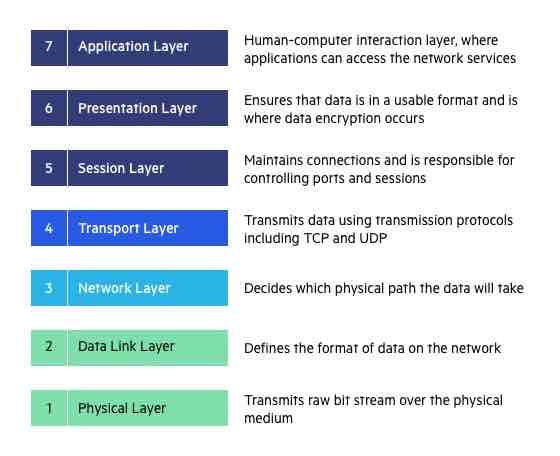
OSI Model Layer 7:
Application Layer (7)
DNS, DHCP, FTP, PDU, Telnet, POP3/IMAP

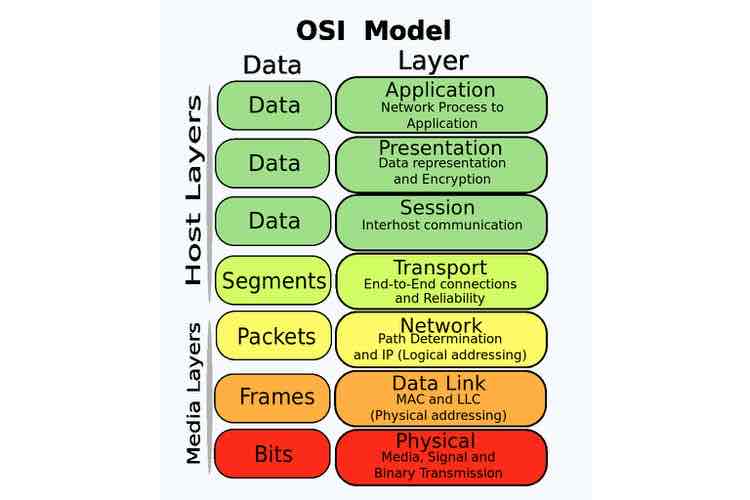
OSI Model Layer 6:
Presentation Layer (6)
ASCII, JPEG, GIF, SSL, TLS; Data formatting is performed at the Presentation layer 6.
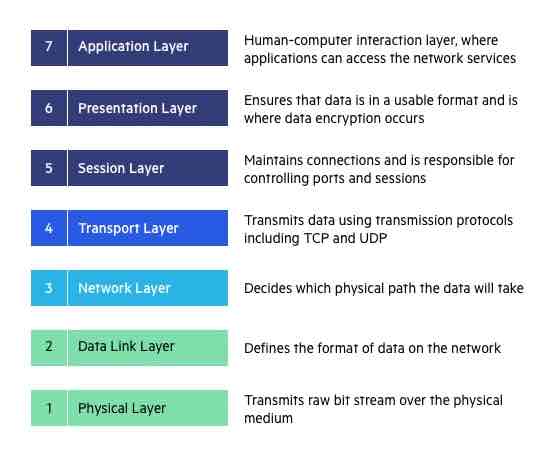
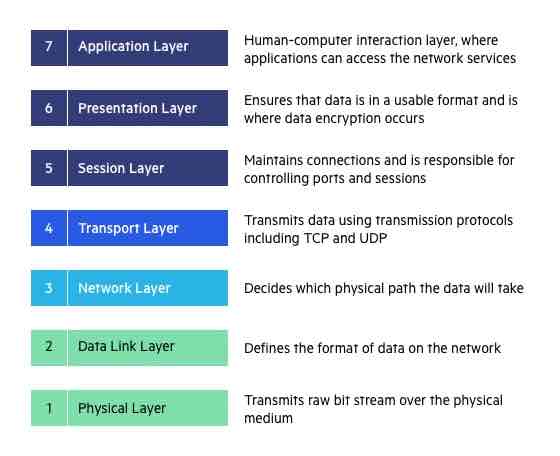
OSI Model Layer 5
Session Layer (5)
SIP, NetBIOS, PPTP
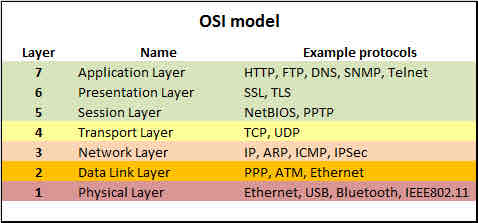

OSI Model Layer 4:
Transport Layer (4)
TCP, UDP; The Transport layer is responsible for breaking upper-layer data into segments and allowing reliable communication through end-to-end flow control, error detection, and error correction.
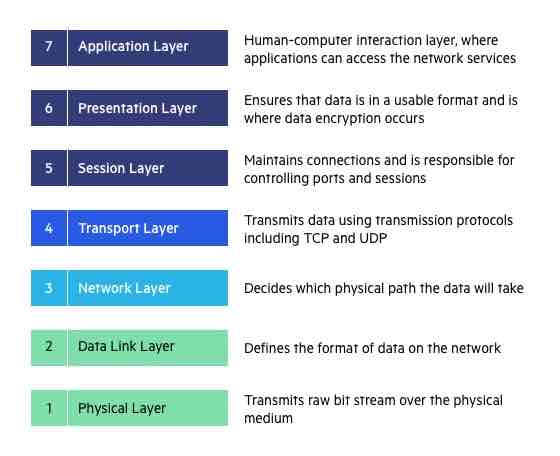
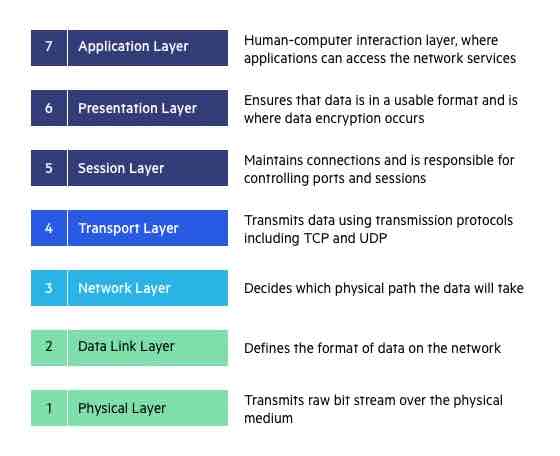
OSI Model Layer 3:
Network Layer (3)
IPv4, IPv6, OSPF, RIP, BGP, ICMP; Path identification and selection is a function of the Network layer 3. At layer 3, the network layer, the routing part of the router (such as a SOHO router), makes forwarding decisions between the local private network and the public Internet.
TTL is a field used at the Network layer within IP packets. It is used to limit the lifespan of a packet to prevent it from circulating indefinitely on the network.
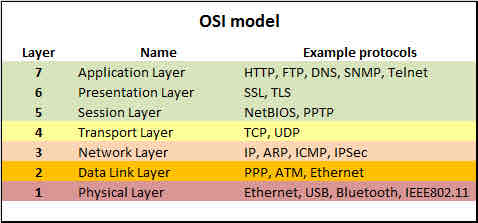
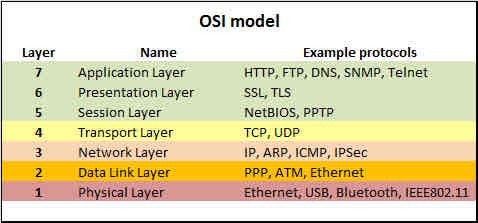
OSI Model Layer 2:
Data (Link) Layer (2)
Ethernet, PPP, Frame Relay, NIC/MAC Address/EUI and VLANs, Bridge, Switch, Frame; Media access, logical topology, and device identification occur at the Data Link layer 2. Ethernet switching by using hardware-based media access control (MAC) addresses and wireless to wired bridging make use of physical layer adapters at layer 2. Source Hardware Address, Destination Hardware Address and Checksum are header fields added by the Data Link layer.
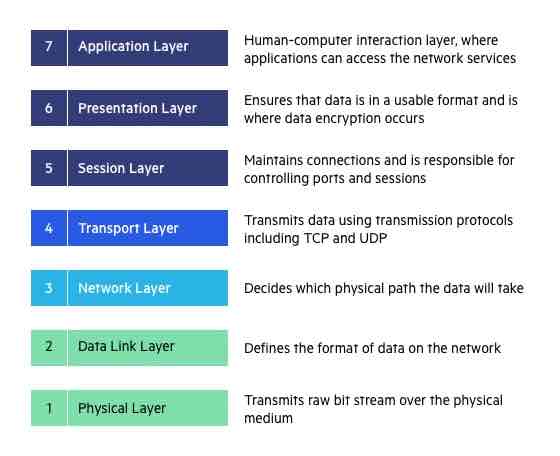
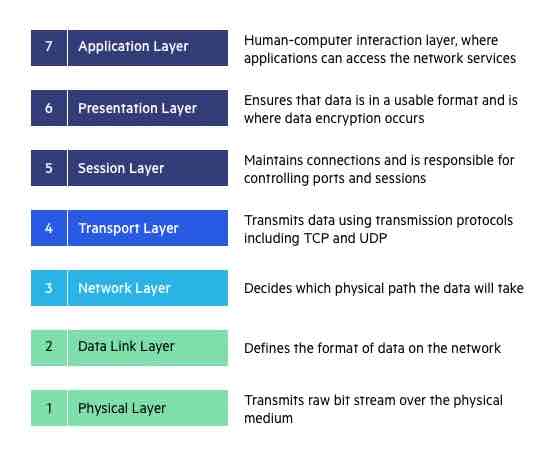
OSI Model Layer 1:
Physical Layer (1)
WiFi, USB, Bluetooth, RJ45, SDH, MW/RF, Transceiver, Repeater Cable, Media Converter, Hub; Message transmission through a medium is performed at the Physical layer.
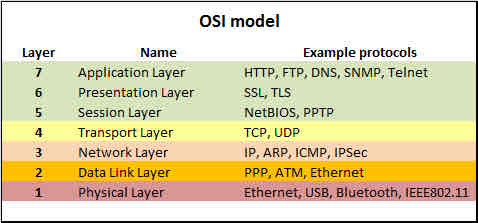

Please Do Not Throw Sausage Pizza Away
Please - PHYSICAL
Do - DATA
Not - NETWORK
Throw - TRANSPORT
Sausage - SESSION
Pizza - PRESENTATION
Away - APPLICATION
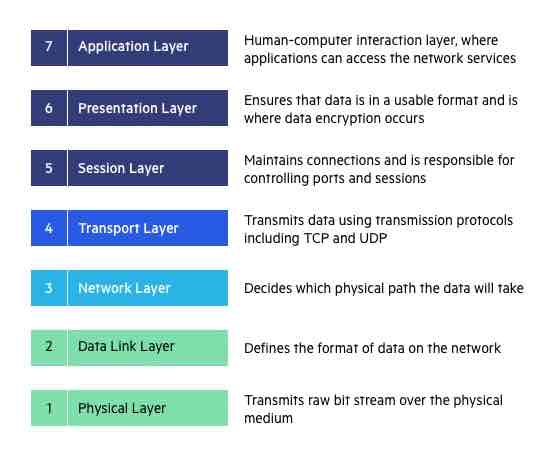
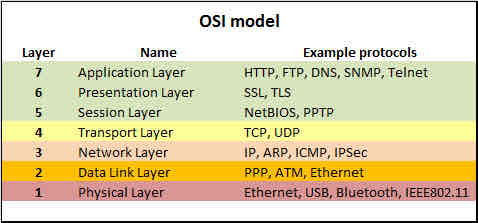
All People Seem To Need Data Processing
All - APPLICATION
People - PRESENTATION
Seem - SESSION
To - TRANSPORT
Need - NETWORK
Data - DATA
Processing - PHYSICAL
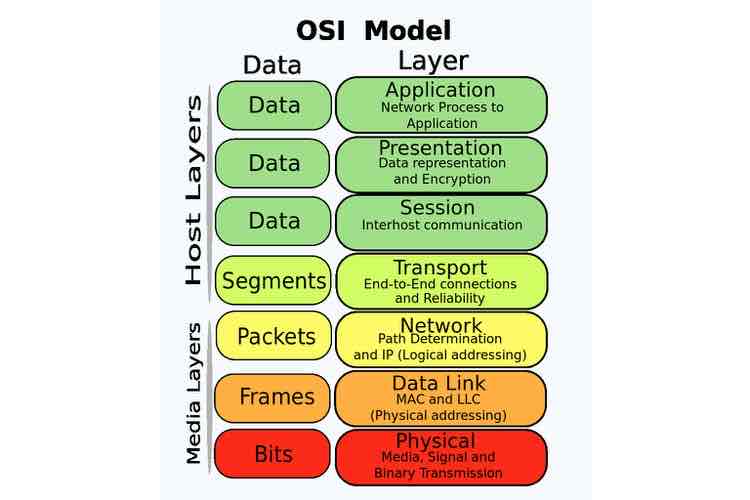
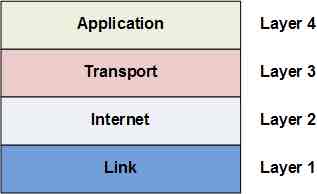
TCP/IP Model 4 layers
4 layers
Application
Transport
Internet
Link
The Link Layer
The link layer is the lowest layer of the TCP/IP model; it is also referred to in some texts as the network interface layer. The link layer combines the physical and data link layer functions into a single layer. This includes frame physical network functions like modulation, line coding and bit synchronization, frame synchronization and error detection, and LLC and MAC sublayer functions. Common protocols include the Address Resolution Protocol (ARP), Neighbor Discovery Protocol (NDP), IEEE 802.3 and IEEE 802.11.
The Internet Layer
The Internet layer is the next layer up from the link layer and is associated with the network layer of the OSI model. Functions include traffic routing, traffic control, fragmentation, and logical addressing. Common protocols include IP, ICMP and IGMP.
The Transport Layer
The Transport layer is the next layer and is typically related directly with the same named layer in the OSI model. Functions include message segmentation, acknowledgement, traffic control, session multiplexing, error detection and correction (resends), and message reordering. Common protocols include the Transport Control Protocol (TCP) and User Datagram Protocol (UDP).
The Application Layer
The Application layer is the highest layer in the TCP/IP model and is related to the session, presentation and application layers of the OSI model. The application layer of the TCP/IP model is used to handle all process-to-process communication functions; these functions were carried out by multiple different layers when referencing the OSI model. There are a number of different functions which are carried out by this layer, including session establishment, maintenance and termination, character code translations, data conversion, compression and encryption, remote access, network management and electronic messaging to name a few. Common protocols include Named Pipes, NetBIOS, MIME, TLS, SSL, FTP, DNS, HTTP, SMTP and many others.

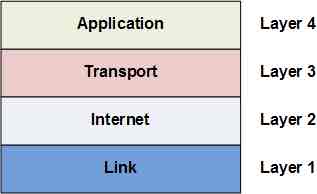
The TCP/IP Link Layer
The TCP/IP Link Layer
The link layer is the lowest layer of the TCP/IP model; it is also referred to in some texts as the network interface layer. The link layer combines the physical and data link layer functions into a single layer. This includes frame physical network functions like modulation, line coding and bit synchronization, frame synchronization and error detection, and LLC and MAC sublayer functions. Common protocols include the Address Resolution Protocol (ARP), Neighbor Discovery Protocol (NDP), IEEE 802.3 and IEEE 802.11.
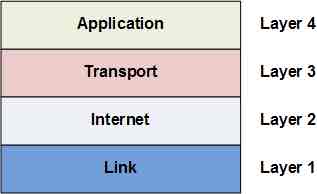
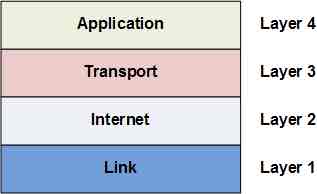
The TCP/IP Internet Layer
The Internet Layer
The Internet layer is the next layer up from the link layer and is associated with the network layer of the OSI model. Functions include traffic routing, traffic control, fragmentation, and logical addressing. Common protocols include IP, ICMP and IGMP.
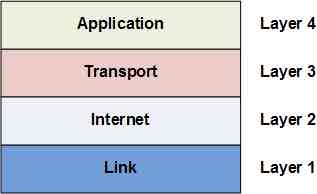
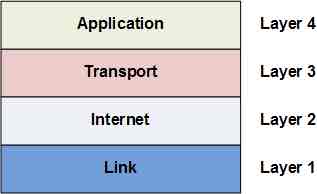
The TCP/IP Transport Layer
The TCP/IP Transport Layer
The Transport layer is the next layer and is typically related directly with the same named layer in the OSI model. Functions include message segmentation, acknowledgement, traffic control, session multiplexing, error detection and correction (resends), and message reordering. Common protocols include the Transport Control Protocol (TCP) and User Datagram Protocol (UDP).
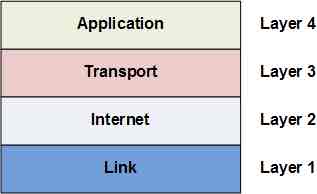
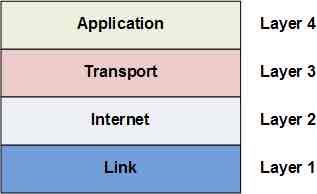
The TCP/IP Application Layer
The TCP/IP Application Layer
The Application layer is the highest layer in the TCP/IP model and is related to the session, presentation and application layers of the OSI model. Functions carried out by this layer, include session establishment, maintenance and termination, character code translations, data conversion, compression and encryption, remote access, network management and electronic messaging. Common protocols include Named Pipes, NetBIOS, MIME, TLS, SSL, FTP, DNS, HTTP, SMTP and many others.
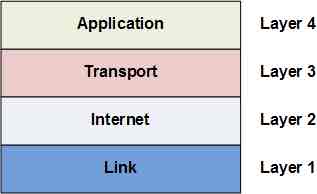
NICs, Bridges and Gateways operate at what OSI layer?
NICs, Bridges and Gateways operate at OSI Data Link layer 2
Hubs and Repeaters operate at what OSI layer?
Hubs and Repeaters operate at the OSI Physical layer 1?
What are three header fields added by the Data Link layer in the OSI model?
Source hardware MAC address, destination hardware MAC address and checksum 03 head fields added by the Data Link layer 2 in the OSI model.